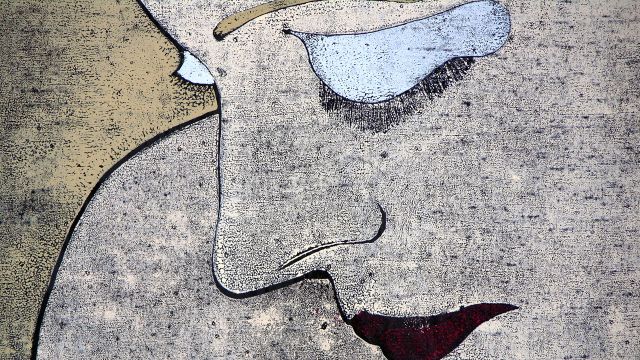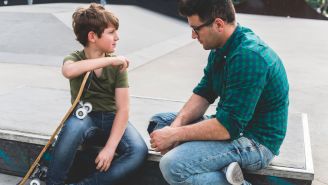Updated on November 1, 2022.
Consider these statistics—every 68 seconds someone in the United States is sexually assaulted, according to the Rape, Abuse, and Incest National Network (RAINN). A September 2019 study published in JAMA Internal Medicine revealed that in the United States, 6.5 percent of women surveyed between the ages of 18 and 44 reported that their first sexual intercourse encounter was forced—not voluntary. Nationwide, that would equate to about 3.3 million women.
Sexual violence is something that can affect anyone—people of all gender identities and sexual orientation, and children of all backgrounds. Learning more about sexual violence can help Americans identify risk factors and signs of abuse and can also empower victims to get the help that they need so they can feel safe again.
What is sexual assault?
Sexual assault and abuse are two all-encompassing terms that can take on many different forms. The formal definition of sexual assault is sexual contact or behavior that’s forced and not explicitly agreed upon by the victim or survivor. This can include everything from rape to unwanted provocative touching or verbal exchanges.
But the definition of sexual assault—and related terms like rape and battery—can vary from state to state. Rape, Abuse, and Incest National Network (RAINN), a nonprofit anti-sexual assault organization, provides a state-by-state guide but here are a few general definitions:
- Rape: Sexual penetration without permission. This can include penetration of the vagina or anus with a body part or object and any type of oral penetration.
- Drug-facilitated sexual assault: When prescription drugs like sleep medications, street drugs like ecstasy, or alcohol is used (either by the victim or forced upon by the perpetrator) and the perpetrator takes advantage of the situation by committing a sexual act without the victim’s consent.
- Incest: Sexual contact between family members.
How many people experience sexual assault in the United States?
One in every six American women and one in every 33 men will be victims of attempted or completed rape at some point during their lives. And some groups are facing more risk than others. People who are LGBTQ+ are four times more likely to experience some sort of violent victimization, like sexual assault and rape, compared to non-LGBTQ+ people.
To break it down, here are some statistics from RAINN. Every year...
- 80,600 inmates are sexually assaulted or raped
- 60,000 children are victims of sexual abuse
- 433,648 people aged 12 years and older are sexually assaulted or raped
- 18,900 military members experience unwanted sexual contact
When it comes to children, one in every nine girls and one in every 53 boys under the age of 18 will experience sexual abuse or assault by an adult.
Most survivors knew the person who assaulted them
While it’s certainly possible for a stranger to be sexually abusive, in 8 out of 10 rape cases, the victim knew the person who assaulted them. What’s more, 55 percent of all sexual assaults occur at or near the victim’s home.
Why survivors often don’t come forward
Only about 25 percent of people who experience sexual assault actually report it, according to RAINN. A study published in 2022 in Frontiers in Psychiatry stated that as many as 20 percent of women and 39 percent of men never disclose their experience to anyone. The study also stated that only 16 to 25 percent of people who experienced sexual abuse in childhood actually came forward about it before adulthood.
Why? This answer is not a simple one, but there are a few well-known theories.
When it comes to kids, many younger children don’t admit what happened all at once; they often drop subtle hints over the course of weeks or months, making it hard for parents, teachers, or legal guardians to pick up on those hints. Children are frequently scared to admit what happened, too, especially if their abuser threatened them in any way.
When it comes to men and boys, stereotypes about masculinity uniquely influence their experience. RAINN shares that some men or boys feel ashamed that they were not able to “fight off” the abuser. When young men are sexually assaulted, they might feel pressure from society to be proud of sexual activity early on in life, even if it’s not something they wanted. This too may prevent them from sharing the experience.
There are other reasons adults have difficulty disclosing what has happened to them. For one, it could be that the perpetrator is in a position of power, otherwise known as “power dynamics.” The perpetrator—be it an employer, a very well-known or liked person or significant other—holds some power over the survivor. In a power dynamic situation, the perpetrator might promise the victim something for keeping the information a secret. The perpetrator might have also threatened the victim with something like a firing or exposing a personal matter to the team.
Another reason sexual violence survivors often don’t come forward: Fear of being blamed. Survivors are sometimes wrongly blamed for inviting the crime by flirting or dressing provocatively. Survivors might also fear being blamed for the sentencing consequences. They might choose not to come forward because of the anguish and anxiety they’ll feel having to relive the experience all over again. They might fear coming forward if it’s someone they know.
Some people also might not realize that saying “yes” once does not mean “yes” every time. Saying yes in a previous situation, like with a former partner, does not mean you’re giving consent in all situations.
Bottom line: If you didn’t give consent in the moment, it is assault. And if you ask someone to stop and they do not stop—no matter what’s going on at the moment—it is assault.
What are some of the long-term effects of sexual assault?
Perhaps the most common effect is post-traumatic stress disorder (PTSD), a disorder that usually happens as the result of a disturbing or seriously distressing event. PTSD causes flashbacks, bad dreams, and frightening thoughts. The vast majority of female rape survivors—94 percent—experience PTSD symptoms.
Women who have experienced some type of sexual assault may also be more likely to have an abortion and be diagnosed with fertility issues, including endometriosis and ovulation and menstruation problems. These women were also more likely to report being in fair or poor health, according to the 2019 study published in JAMA Internal Medicine.
Other issues can arise following a sexual assault, including:
- Completed suicide, or suicidal thoughts
- Severe distress
- Increased drug and alcohol use
- Problems at work
- Relationship issues
- Pregnancy
- Sexually transmitted infections
How can I get help?
If you’ve been sexually assaulted, it’s not your fault and you’re not alone. It can be hard to reach out for help after experiencing such a traumatic and violent act. If you or someone you know has experienced sexual assault, reach out for help. Here are some universal ways to get help:
- If you are able in the moment, call 911 and report that you are in immediate danger.
- Find a local sexual assault service provider through RAINN. A trained service provider can help you find the care you need and can even accompany you to the hospital or emergency room if you’d like.
- Call the National Sexual Assault Hotline at 1-800-656-4673 (HOPE). Speak—in confidence—to a professional about resources, laws in your area, medical centers near you, and long-term support options.
- Talk to your local police department—either in person or on the phone. The sooner you can make contact, the better.
If you’re dealing with work or school-related harassment issues:
- Report the incident to your supervisor, the perpetrator’s supervisor, or your human resources department.
- Use on-campus resources like sexual assault service centers, counseling, and health centers.
- To connect with other survivors, get help filing federal or other legal complaints, or get mental health help on campus you can also try End Rape on Campus.
No matter how long ago, if you’ve experienced sexual assault, it can have a lasting impact. The most important thing you can do is focus on taking care of yourself and reaching out to others.
Remember you aren’t alone. If you or someone you know is struggling emotionally, immediately call the National Suicide Prevention Lifeline at 1-800-273-8255 or call, text, or chat 988. It’s free, confidential and help is available 24/7.






